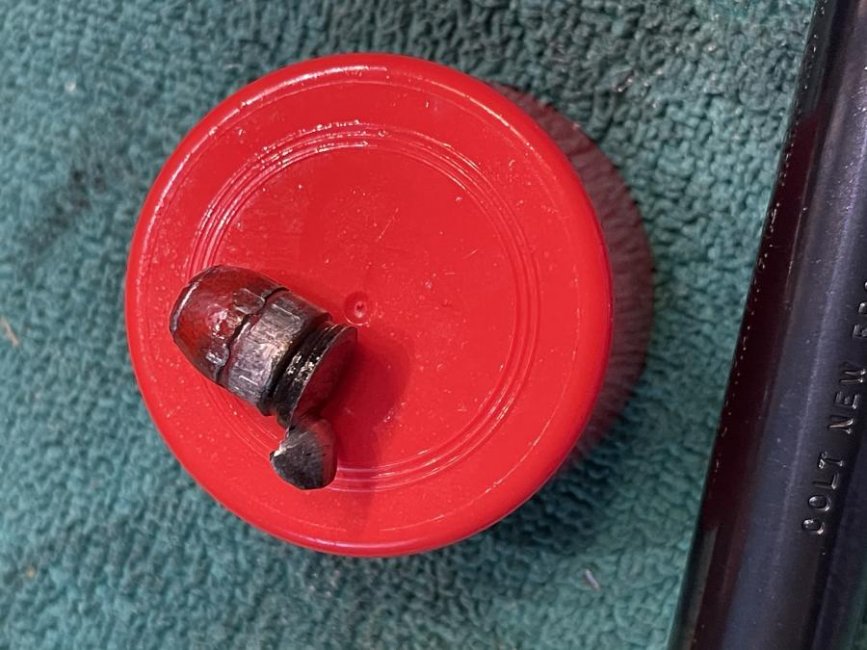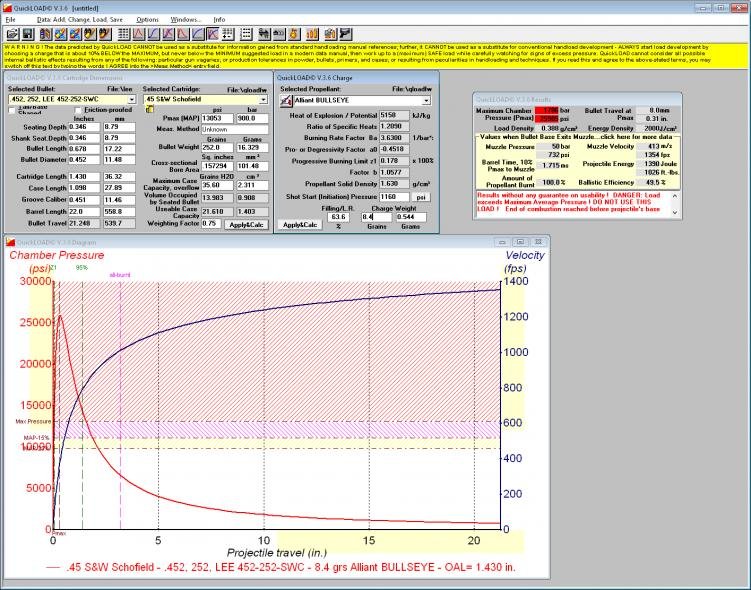Zorros
Ultimate Member
Was shooting a 45 colt new frontier and a 1907 made colt SAA. Loads were homemade schofields, 4.2 bullseye and 250 coated lead rnfn bullet from acme. Last rd in cyl the cyl locked up. Thought loaded rd under hammer but turned out fired. This bullet was in the forcing cone, protruding enough to lock up cyl. Yikes. What might have been. I load one at a time with a lee classic but i guess it is possible i did not charge this rd, although there was recoil. Maybe recoil made improperly crimped bullet separate from case?



